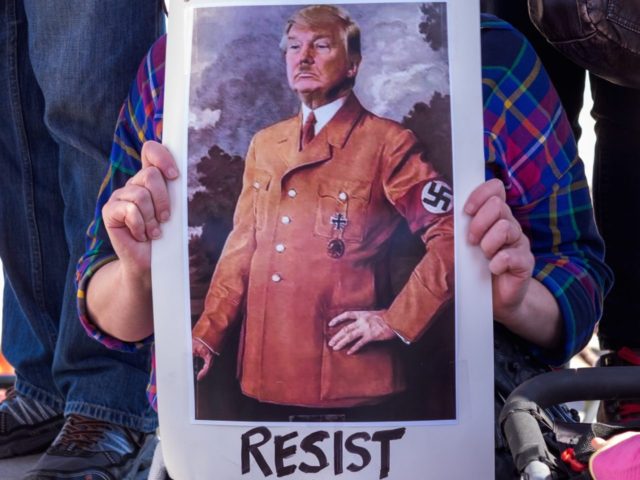Rep. Tom McClintock (R-CA) faced a “raucous” town hall meeting in Roseville on Saturday morning, and had to be escorted out by police at the end of the meeting. McClintock later told the Los Angeles Times that there had been an “anarchist” group at the meeting that caused security concerns.
He added, according to the Times: “The way to change the course of the country is not to shout people down, not to riot in the streets,” he said. “Talk with your friends and your neighbors and share your thoughts with them.”
From all accounts, McClintock did rather well, faced with hostile questions and protesters who held up “RESIST” signs in the meeting. He defended President Donald Trump’s executive order restricting travel from terror-prone countries, for example.
As he left, the Sacramento Bee reported, protesters chanted: “This is what democracy looks like.”
Well — not exactly.
In the summer of 2009, Democratic members of Congress faced vigorous opposition at town hall meetings as they returned to their districts to sell a specific piece of legislation — Obamacare — that few of them had read and that the public did not want.
The Tea Party movement had begun earlier that year, in opposition to President Barack Obama’s stimulus, which sent nearly a trillion dollars to pet projects and state and local governments that had little prospect of creating new jobs.
But the people showing up at town hall meetings were not there simply to protest or “resist,” though Democrats accused them of “carrying swastikas” and derided them as “Brooks Brothers” demonstrators. Most were not aligned with the Republican Party. They simply wanted answers about a policy they correctly feared would upend their health insurance and health care.
Democrats and the left mocked the town hall protests, and cast the Tea Party as racist. But then they tried to manufacture their own grass-roots movements — first with Occupy Wall Street in 2011, then with Black Lives Matter in 2014.
The new anti-Trump protests continue that pattern, with protesters besieging McClintock and other Republican members of Congress at town hall meetings.
What the left has clearly failed to understand about the Tea Party movement, however, is that it was an authentic grass-roots effort in response to specific congressional legislation that had a broad effect on Americans in general. It was not a partisan effort to take down President Obama.
Democrats have never been able to accept the Tea Party’s authenticity, which is why their anti-Trump imitation of the Tea Party will struggle: it is not built on broad popular opposition to Trump policies, but on the energies of committed partisans whose basic grievance is that Trump was elected in the first place.
When left-wing activists hold up signs like “RESIST,” they are egging each other on, not broadening their appeal. The Tea Party succeeded, at least initially, because it adopted the opposite approach, appealing to people who felt abandoned by both political parties.
The whole concept of the so-called “Resistance” is also farcical. It implies that the United States is a dictatorship that cannot be opposed through ordinary politics.
It is a radical idea, one that lends itself to excess — such as the violent protests at the University of California, Berkeley last week.
Moreover, Trump’s policies — including the executive order — are broadly popular. Unless it connects to the voters Hillary Clinton lost in 2016, the “Resistance” will fail.
Joel B. Pollak is Senior Editor-at-Large at Breitbart News. He was named one of the “most influential” people in news media in 2016. His new book, How Trump Won: The Inside Story of a Revolution, is available from Regnery. Follow him on Twitter at @joelpollak.

COMMENTS
Please let us know if you're having issues with commenting.